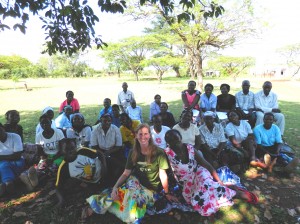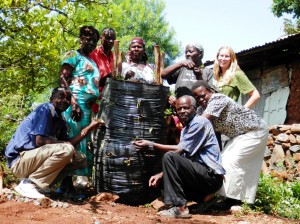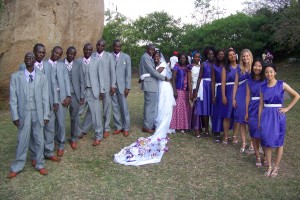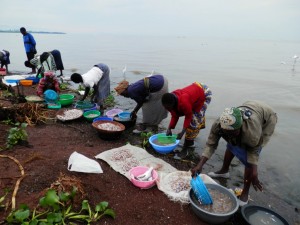GIVE – Global Initiative for Village Empowerment – is a Canadian Non-Governmental Organization (NGO) created in 2006. GIVE is a community-based initiative that operates sustainable programs based from the Kenya office located in Kanyawegi, near Lake Victoria. The goal is to eventually leave Kanyawegi with the residents fully self-sustaining the projects. We involve community members at all stages of the process, including village chiefs and district officials, local translators, and community health workers (CHWs).
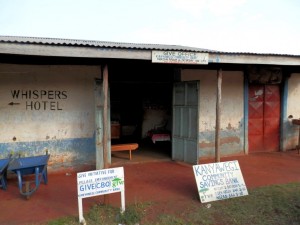
GIVE office and community bank
There are four components to GIVE – Finance, Education, Health, and Food Security and Nutrition (FSN). I am one of four travelling members of the FSN Team.
The FSN Team focuses on three main areas:
1. Infant and Young Child Feeding Practices (IYCF)
Starting in June, we are running IYCF workshops twice per week at the Ober Kamoth medical centre. Attendees are pregnant women and mothers with children under 2 years of age. Periodically, CHWs attend the sessions to observe how we perform the workshop. During July and August, we will run two half day train-the-trainer workshops for the CHWs, providing detailed instructions on how they can run the sessions during the rest of the year, and eventually after GIVE leaves the village.
The workshops follow the guidelines of the Kenyan National Strategy for IYCF and the recommendations of the World Health Organization (WHO). We promote exclusive breastfeeding for infants less than 6 months old, regardless of HIV status. We then provide detailed information on recommended complimentary feeding for children 6-24 months of age.
We also include a demonstration on how to correctly make thick, enriched porridge for complementary feeding of infants 6-24 months old. The porridge base is made with a flour mix of millet, sorghum, maize, and dried cassava. We add oil, sugar, iodized salt and a mashed fruit that changes each session (i.e. banana, mango, papaya).
2. Food Security: Sac Gardens
Procuring a variety of vegetables can be expensive, so community members may not receive the range of micronutrients required to maintain their health. A sac garden offers an inexpensive way to produce nutritious food for families, without taking up much space. Sac gardens are made using items that a family will already have at hand. An empty flour sac is most often used, supported by sticks placed vertically in four corners. A middle column is built from rocks to provide drainage, surrounded by soil mixed with dried manure. Slits in the side of the bag provide growing space for kale, and the top is filled with tomato and onion plants.
We provide a train-the-trainer workshop for the local Agriculture Committee, who will train the CHWs to disseminate the lesson, demonstrating how to build the garden and providing information about plant care. For example, onions are planted to provide a natural form of pest control as well as nutritious food. We interview the CHWs each summer at their homes to determine how their gardens progressed and what types of problems they came across. Using this information, we can adjust the advice about pests and growing conditions. The success of CHWs gardens is vital in the knowledge transfer to the rest of the community. Some CHWs have been able to grow enough vegetables to feed their family and have excess to sell, increasing their income to procure a variety of foods.
3. HIV/AIDS Awareness Soccer Tournament
Every Saturday for 3 months, GIVE hosts a soccer tournament for the local primary schools. The tournament is designed to spread awareness about HIV/AIDS transmission and treatments. The Health Team is available to speak about HIV/AIDS and answer any questions the children may have. The FSN Team speaks with children about nutrition and provides a midday healthy snack of samosas, bananas (rabolo), and Quencher, an energy drink.
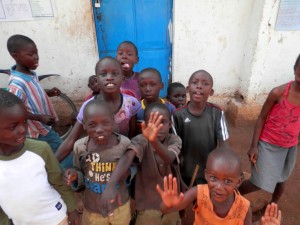
Fun at the soccer tournament
For more information about GIVE, please visit http://www.givesociety.org/

